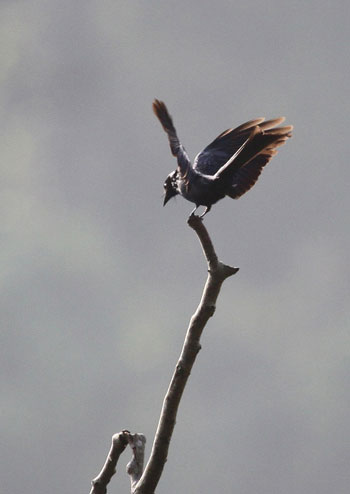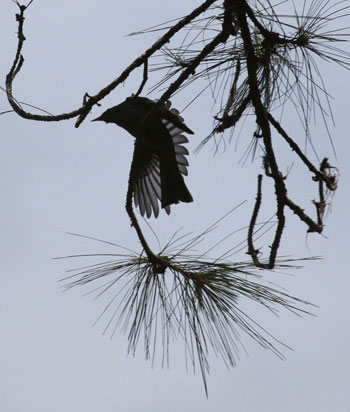Under the influence of humans, the creatures of the central-south highlands are in decline, the image of precious birds is also disappearing.
 Nectariniidae (Nectariniidae). Most of the nectar-absorbing species feed on nectar, some of which feed on insects when feeding young birds. Vietnam has captured specimens of nectar-sucking birds in Di Linh, Tay Ninh, Bien Hoa and Phu Quoc.
Nectariniidae (Nectariniidae). Most of the nectar-absorbing species feed on nectar, some of which feed on insects when feeding young birds. Vietnam has captured specimens of nectar-sucking birds in Di Linh, Tay Ninh, Bien Hoa and Phu Quoc.
 Close-up of large cuoc bird There are 84 species in the world, of which Vietnam has 10 species of Cuoc birds. Their characteristic feature is a very broad beak and head, the largest species with an average weight of about 210 g and a length of about 33 cm. They live in the natural habitat of forests, eating insects and fruits. Figs are their favorite food. Cuoc is believed to be an important agent in the propagation of seeds in tropical forests.
Close-up of large cuoc bird There are 84 species in the world, of which Vietnam has 10 species of Cuoc birds. Their characteristic feature is a very broad beak and head, the largest species with an average weight of about 210 g and a length of about 33 cm. They live in the natural habitat of forests, eating insects and fruits. Figs are their favorite food. Cuoc is believed to be an important agent in the propagation of seeds in tropical forests.
Dicrurus leucophaeus baker (Dicrurus leucophaeus baker). In Vietnam, the Gray Paddle breeds in the mountainous areas of the northern provinces, but in small numbers it migrates south in winter.
The gray palette has the following characteristics: ash gray back with steel green, slightly lighter ash gray belly, with very pale steel reflections, gray wings and tail with purple and green reflections, darkened part of the pale black wing.
 one of the endemic species of Vietnam. Hoa Mi Langbiang, also known as Mi Nui Ba, is a rare bird of the Se tribe, the Khom family. This bird can only be found at altitudes above 1500 m.
one of the endemic species of Vietnam. Hoa Mi Langbiang, also known as Mi Nui Ba, is a rare bird of the Se tribe, the Khom family. This bird can only be found at altitudes above 1500 m.
Blue bird (Chloropseidae). They are one of three families of birds endemic to the Indomalaya ecoregion. These birds have a crest appearance (Pycnonotidae) and live in forests. Although this group tends to be greyish brown, they are hermaphrodites, with the male having green and yellow plumage.
Bluebirds typically eat fruit, honey, and sometimes even insects. They have sharp blades, which are suitable for eating honey. They lay 2-3 eggs in the nest on the tree.
Gmelin Hypsipetes leucocephalus bird. In Vietnam, in winter, this subspecies is found in mountainous areas from the northern border to Hai Van Pass, Lam Dong (Bidoup Nui Ba).
Adult males have a white head, neck and upper breast. The rest of the coat is black or light, sometimes with brown streaks. The tail is sometimes white. The female bird has the same plumage as the male, but the abdomen is usually dark gray. The plumage of this subspecies varies widely, and can be found in individuals whose heads have more or less black hair.
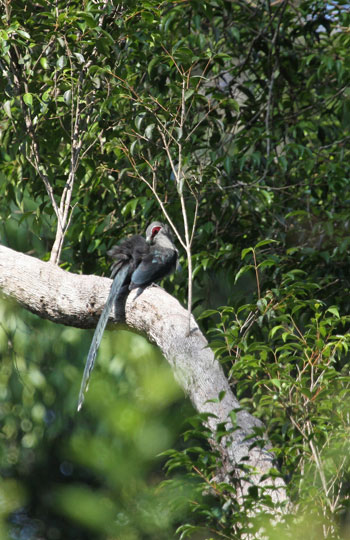 Big Chim Phon (Green-billed Malkoha). It is a bird whose dorsal is dark gray, slightly greenish, the feathers of the wings and the feathers of the tail are slightly darker but greener, the feathers of the tail are a little white, the feathers of the chin, the throat and chest are pulled; gray chest and belly. In Vietnam, this species is found in south-central and southern regions. They often live on the edge of forests where dense trees are found.
Big Chim Phon (Green-billed Malkoha). It is a bird whose dorsal is dark gray, slightly greenish, the feathers of the wings and the feathers of the tail are slightly darker but greener, the feathers of the tail are a little white, the feathers of the chin, the throat and chest are pulled; gray chest and belly. In Vietnam, this species is found in south-central and southern regions. They often live on the edge of forests where dense trees are found.
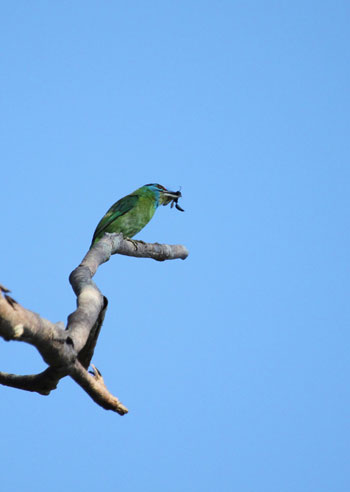 Megalaima asiatica. In Vietnam, this species is found in most areas, where there are many dense trees and no more than 800 m high.
Megalaima asiatica. In Vietnam, this species is found in most areas, where there are many dense trees and no more than 800 m high.
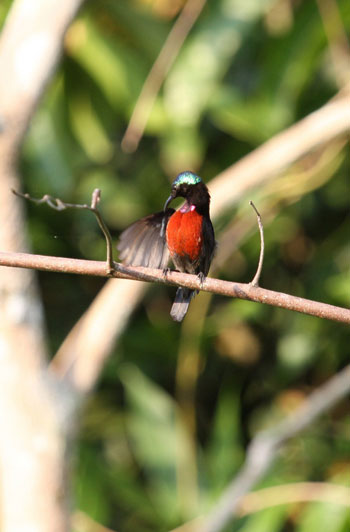 The birds suck the honey down the pink throat. Above is the male bird. The drum has the following characteristics: The top of the head is greenish steel with a golden cup; front eyes, cheeks, ears, sides and upper neck, upper back, internal secondary wing feathers and black velvet sheath; lower back, shoulders and wings covering shoulders, hips and tail reddish green.
The birds suck the honey down the pink throat. Above is the male bird. The drum has the following characteristics: The top of the head is greenish steel with a golden cup; front eyes, cheeks, ears, sides and upper neck, upper back, internal secondary wing feathers and black velvet sheath; lower back, shoulders and wings covering shoulders, hips and tail reddish green.
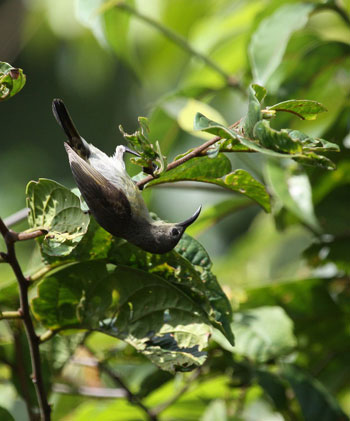 Birds suck pink honey throat – Females. Females are characterized by a yellowish green dorsal surface with hairs at the top of the head with dark streaks in the middle of the feathers; black tail; brown wings slightly hooked; hair in the middle of the tail with a white border on the tip.
Birds suck pink honey throat – Females. Females are characterized by a yellowish green dorsal surface with hairs at the top of the head with dark streaks in the middle of the feathers; black tail; brown wings slightly hooked; hair in the middle of the tail with a white border on the tip.



